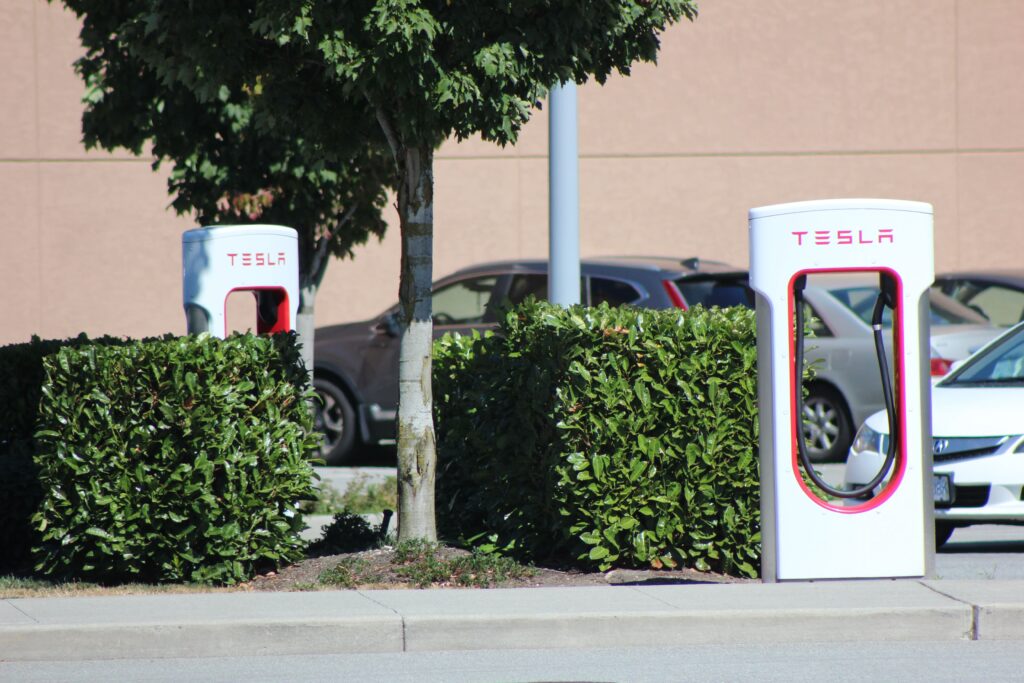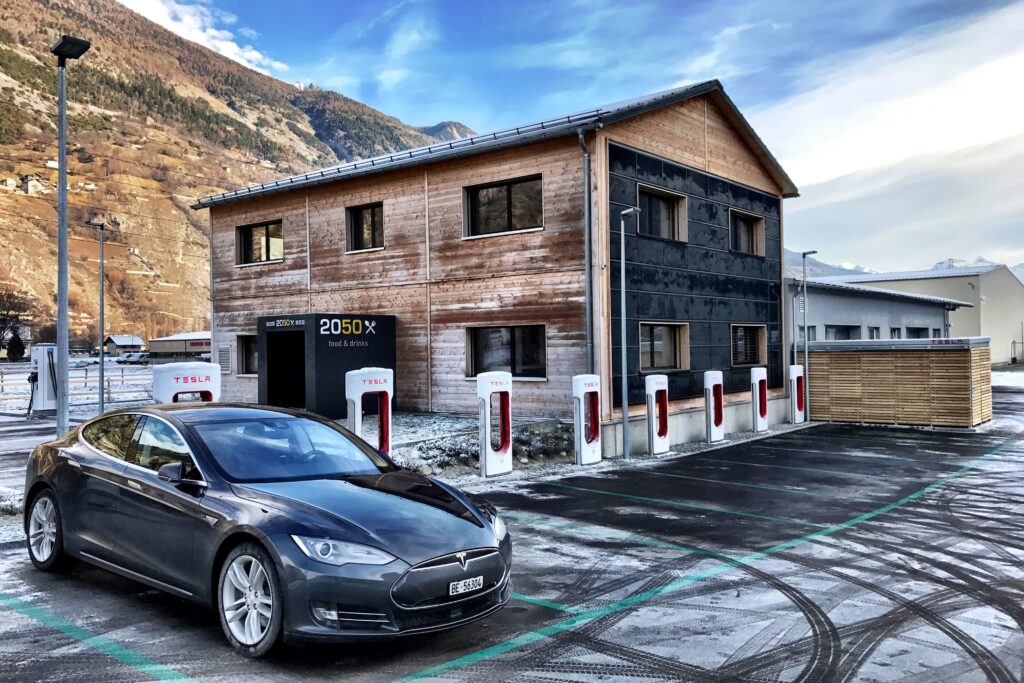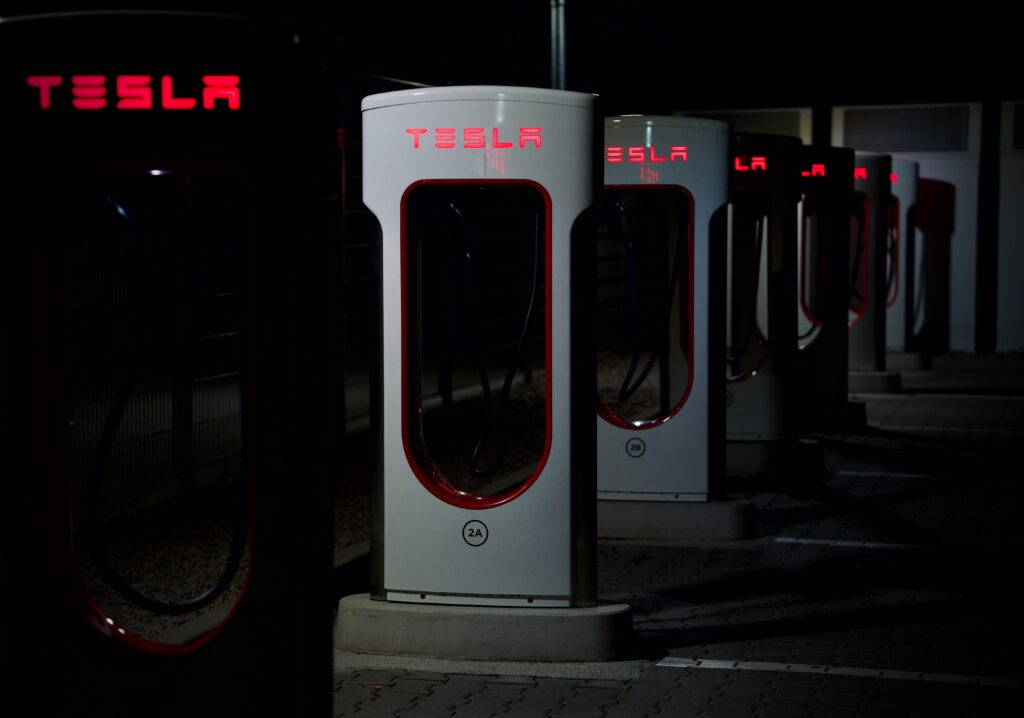As electric vehicles (EVs) become more mainstream, the demand for charging infrastructure continues to grow. Tesla, one of the world’s leading EV manufacturers, has developed a network of fast-charging stations called Tesla Supercharger. In this article, we will take a comprehensive look at how they work.
What are Tesla Superchargers?
Tesla Superchargers are a network of fast-charging stations specifically designed for Tesla electric vehicles. These stations are capable of charging a Tesla vehicle to 80% in as little as 30 minutes. Tesla Superchargers are usually along popular travel routes, allowing drivers to take long-distance trips without worrying about the range of their EV.
How do Tesla superchargers work?
Tesla Superchargers use a combination of hardware and software to provide fast and efficient charging. Let’s take a closer look at each of the components that make up a Tesla Supercharger.
Power Electronics Module (PEM)
The Power Electronics Module (PEM) is the heart of the Tesla Supercharger. It converts AC power from the grid into DC power that charges the battery of a Tesla electric vehicle. The PEM is also responsible for monitoring the battery’s temperature and voltage to ensure safe and efficient charging.
Battery Management System (BMS)
The Battery Management System (BMS) is responsible for monitoring and controlling the charging process. The BMS communicates with the PEM to ensure that the battery is charged to the appropriate level without causing damage.
Cooling System
The cooling system manages the temperature of the charging cable and the PEM. The cooling system ensures that the components do not overheat during the charging process, which could result in a decrease in charging efficiency.

Charging Cable
The charging cable transfers power from the supercharger to the Tesla electric vehicle. It handles high levels of current and is equipped with a liquid-cooled connector to manage temperature during the charging process.
Software
The software manages the charging process and ensures that the Tesla electric vehicle charges to the appropriate level. It also communicates with the Tesla electric vehicle to provide real-time information on the charging process and an estimated charging time.
Fast Charge, Long Drive: The Power of the Tesla Supercharger
Tesla Superchargers are revolutionising the electric vehicle industry, providing an unparalleled level of convenience and efficiency for Tesla owners. These high-powered charging stations charge Tesla’s battery quickly, allowing drivers to cover long distances without the need for extended stops.
With the ability to add up to 75 miles of range in just five minutes, the Tesla Supercharger network is a game-changer for electric vehicle owners.

It uses a combination of high-powered electricity and specialised technology to charge Tesla vehicles at an incredibly fast rate. These chargers work seamlessly with Tesla’s advanced battery technology, allowing for maximum efficiency and fast charging times.
The Superchargers’ innovative cooling system also ensures that the battery is charged at a consistent rate, regardless of the ambient temperature or the battery’s current charge level.
It is also designed to be incredibly convenient for drivers. With over 40,000 Superchargers located around the world, Tesla owners can easily plan long road trips without worrying about running out of battery power. The network is constantly expanding, with new locations being added regularly to ensure that drivers always have access to a charging station when they need it.
One of the impressive features of the Tesla Supercharger network is that drivers can quickly charge their vehicle while taking a short break or grabbing a bite to eat, without the need for an extended stop.
Reliability
Tesla’s Superchargers are also reliable, with a 99% uptime rate. This means that drivers can count on their supercharger being available and operational when they need it. Tesla’s advanced monitoring and maintenance system identifies and resolves any issues with the Supercharger network. This minimises downtime and maximises its availability.
Overall, the Tesla Supercharger network is a true game changer for electric vehicle owners. With its fast charging times, convenient locations, and reliable uptime, the Supercharger network makes long road trips in a Tesla vehicle a breeze. As more EVs hit the road, the supercharger network will continue to expand and evolve, providing an even higher level of convenience for drivers.
Tesla Supercharger vs. Regular Charger: What’s the Difference?
Tesla has been at the forefront of electric vehicle charging, and their Supercharger network is one of the most extensive and advanced charging networks available today. Now, let’s explore the differences between Tesla superchargers and regular chargers.
Charging Speed
One of the most significant differences between Tesla Superchargers and regular chargers is charging speed. Tesla Superchargers provide faster charging times compared to regular chargers. With a supercharger, you can expect to add around 170 miles of range in less than 30 minutes of charging time, whereas regular chargers typically provide around 20–25 miles of range per hour of charging.
Compatibility
Another difference between superchargers and regular chargers is compatibility. Tesla Superchargers are designed exclusively for Tesla vehicles and are not compatible with other electric car models. Regular chargers, on the other hand, are generally compatible with a wide range of electric vehicles, including Tesla models. However, Tesla has been working on the expansion of the network and is building some stations that are accessible to non-Tesla EV drivers.

Availability
Tesla Superchargers are readily available compared to regular chargers. Tesla has invested heavily in building out its Supercharger network, which currently includes over 40,000 Superchargers in more than 4,000 locations worldwide. This means that Tesla owners can easily find a supercharger station. Regular chargers, on the other hand, are still less common.
Cost
Tesla Superchargers are more expensive to use than regular chargers. Tesla Superchargers charge a per-kilowatt-hour (kWh) fee, which is typically higher than the cost of using a regular charger. However, Tesla owners do have the option to purchase a Supercharger Access Plan, which provides a fixed price for using superchargers. Regular chargers, on the other hand, are generally less expensive, and some public chargers are even free to use.
Convenience
Tesla Superchargers offer a level of convenience that regular chargers cannot match. They are typically located near popular places such as shopping malls and restaurants, allowing Tesla owners to take a break and recharge while going about their daily activities. Some Supercharger stations even have lounges where drivers can relax and unwind while their vehicle charges.
Power Output
Another difference between Tesla Superchargers and regular chargers is the power output. Tesla Superchargers use a direct current (DC) power source, which allows for a higher power output, meaning faster charging times. Regular chargers, on the other hand, use an alternating current (AC) power source, which has a lower power output and takes longer to charge an EV.
Final thought:
With the continued growth of electric vehicle adoption, the demand for fast-charging infrastructure is only going to increase. Tesla Superchargers are leading the way in providing fast and efficient charging to electric vehicles.

The combination of hardware and software used in a Tesla Supercharger provides fast and efficient charging for Tesla electric vehicles.
However, Tesla superchargers and regular chargers differ significantly. Tesla Superchargers provide a level of convenience and fast charging times that cannot be matched by regular chargers.
Ultimately, the choice will depend on the individual’s charging needs and the availability of charging stations in their area.


